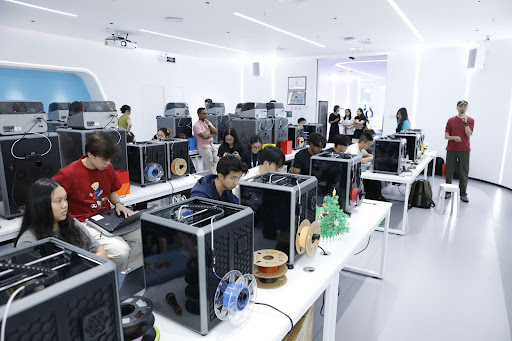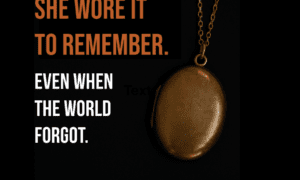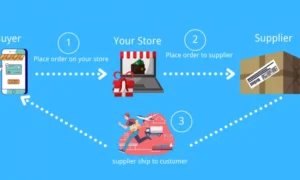3D printing is instrumental in today’s custom-built tooling, replacement parts, and digital manufacturing. Beginning with 3D printed car parts to medical devices, the technology is shifting the way we develop and deliver real-world products. It quickens manufacturing, reduces prices, and provides design flexibility throughout industries.
In 2023, the international 3D printing market passed $20.37 billion, with predictions to exceed $84 billion by 2029 (Statista). Equipment such as the best multicolor 3D printer assists teams in producing full-color prototypes and lowers the duration from concept to launch.
Multicolor 3D Printing and What It Enables
Multicolor 3D printing converts the way designers create models. The best multicolor 3D printer can manufacture high-fidelity prototypes, elaborate models, and realistic components without the requirement for painting or assemblage.
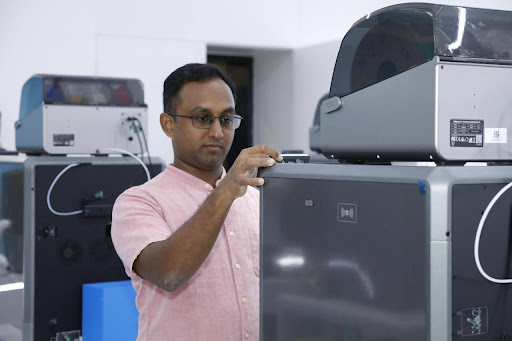
Multicolor 3D printing empowers engineers to produce components with a great many colors and materials in a single mission. This allows clearer vision for clients and teams, and in education, students can grasp part differentiation more finely with colored productions. Besides, in consumer product making, designers can assess the appearance and function of a product right away.
As stated by MIT’s Center for Bits and Atoms, color introduces necessary context in prototyping. For instance, wearables such as smartwatches mostly need user interface marks or tags. That said, Creality has designed numerous tools that assist color change and multi-material usage. These printers clarify how to use a 3D printer for intricate tasks by automating filament switching.
For experts in product design, the best multicolor 3D printer can notably reduce post-processing duration. Also, companies in the film and gaming industries utilize multicolor printing to produce action figures, props, and mementos. As a result, this removes manual painting and lowers production mistakes.
Sectors Impacted by 3D Printing
Here are the key industries influenced by 3D printing and how 3D printing is revamping these industries with its innovative solutions:
Automotive Industry
The auto sector utilizes 3D printed car parts for quick prototyping, weight reduction, and tailor-made part production. Companies such as Ford, BMW, and General Motors use additive manufacturing to develop operating parts.
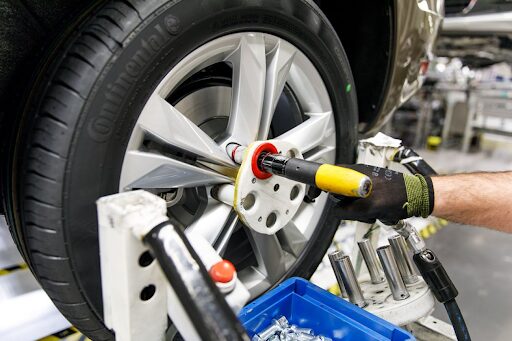
Ford possesses above 90 3D printers internationally and saves millions yearly on fixtures and tooling (Ford Media, 2022). With the correct filament and equipment, Creality printers can make clips, brackets, and ducts utilized in vehicle interiors.
Therefore, it’s easier now for R&D teams and custom shops to print elements whenever required.
Architecture and Construction
Architects employ 3D printers to create scale models and urban design prototypes. The usage of multicolor 3D printing assists in displaying separate building parts like wall textures, green roofs, and zoning regions.
This provides stakeholders with a clear picture before construction starts. Also, utilizing the best multicolor 3D printer helps architects prevent labelling and painting manually. Additionally, models printed with marked surfaces decrease client misreading and boost approval rates.
Medical and Healthcare
Healthcare experts make use of 3D printing to develop prosthetics, surgical guides, and anatomical models. This equipment assists with patient-specific planning. As claimed by the National Institutes of Health (NIH), 3D printed medical models enhance surgical precision and cut down operation duration by up to 62%.
Moreover, soft materials such as silicone or TPU are used for reproducing organs on skin surfaces. With breakthroughs in color printing, anatomical models can involve precise tissue, vein, and muscle outlines, and this helps training and upgrading patient communication.
Start Using a 3D Printer in Your Workflow
Beginning small with 3D printing is useful and low-risk. You do not require specialised expertise or a big budget to start. The secret is to pick the correct entry point and slowly develop confidence.
Choose a Beginner-Friendly 3D Printer
Firstly, find tools that involve automatic bed leveling, touchscreen interface, direct drive extruders, and pre-specified material profiles. Affordable equipment with clear instructions and powerful community assistance is best for newbies.
These models are widespread in the market and generally come partially assembled to simplify arrangement.
Select Easy-to-Print Materials
Begin with materials such as PLA, PETG, or TPU. These materials permit users to delve into a great variety of applications with minor adjustments.
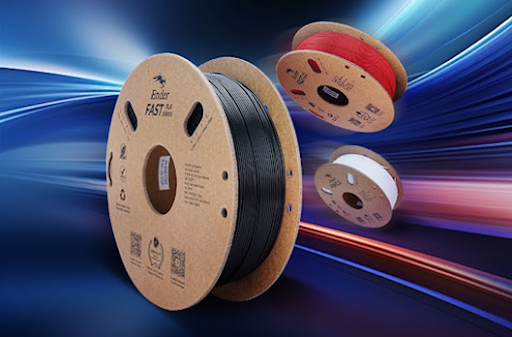
Use Ready-Made 3D Files
Use pre-designed models from online forums like Thingiverse, Printables, and Cults3D. All these websites provide free, tested files in sections such as toys, organizers, tools, and mechanical components. Download, cut, and print, no design expertise needed.
Start with Simple Projects
Experiment with projects that suit your interest and resolve actual issues. These include drawer dividers, phone holders, cable clips, custom keychains, replacement knobs. These fast prints aid you in knowing machine behavior, cooling, supports, and surface finish.
Learn Through Iteration
There are going to be some failed prints. So, utilize every print to adjust print pace, layer height, support settings, and bed adhesion methods. Every change informs more about how to use a 3D printer efficiently. Begin slowly, print constantly, and regulate depending on results.
How Is Creality Leading the Domain?
Creality is a worldwide brand known for revolutionizing 3D printing. The brand provides a comprehensive range of equipment for hobbyists, educators, engineers, and designers. Since 2024, Creality has above 10 million users globally, and its tools are distributed in more than 100 countries.
Creality is dedicated to simplifying user experience and the way people learn how to use a 3D printer by offering thorough guides, video tutorials, and cloud-connected software. That said, the Creality Print software involves mechanical slicing, material presets, and remote monitoring features. In the multicolor category, Creality guides with its Hi-Series and CR-M4 models.
These printers utilize smart filament changing to assist full-color printing without shifting by hand. This innovation activates the best multicolor 3D printing alternatives for consumers who desire complicated visual models. Also, Creality collaborates with international partners in education, manufacturing, and R&D.
In 2023, the company initiated the Creality Educational Program, donating printers and teaching resources to over 5000 schools. These attempts indicate a clear dedication to popularization and future tech literacy.
Conclusion
3D printing goes on, revisiting how we manufacture, design, and progress. Beginning from multicolor models to 3D printed car parts, the technology empowers quick prototyping and customization like never before. A more makers learn how to use a 3D printer, its role in business, education, and product design will thrive, and Creality stays a trusted partner in this shift.

